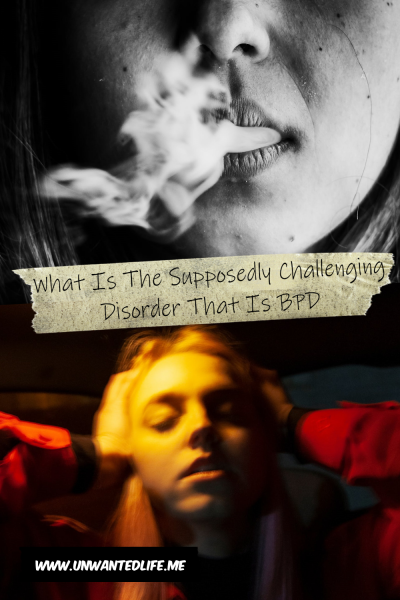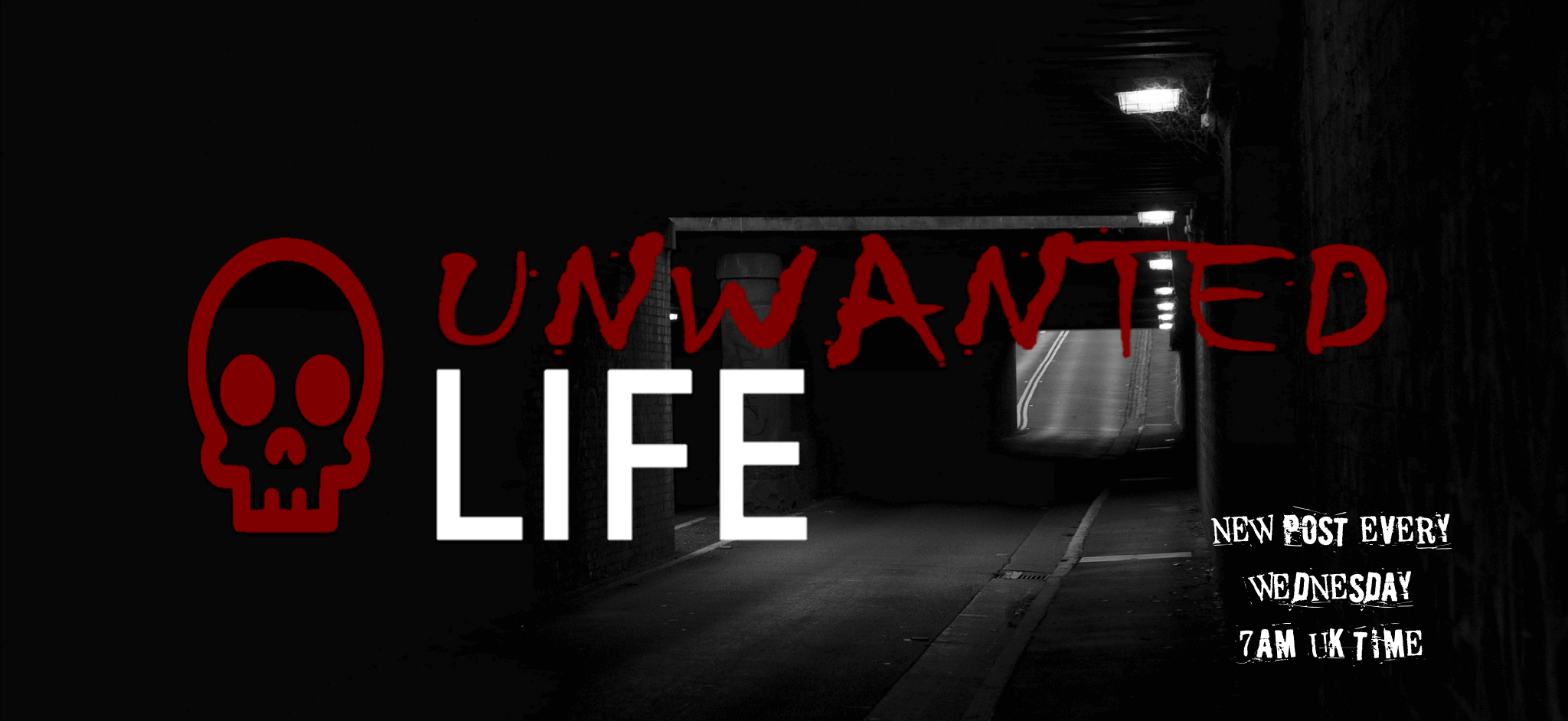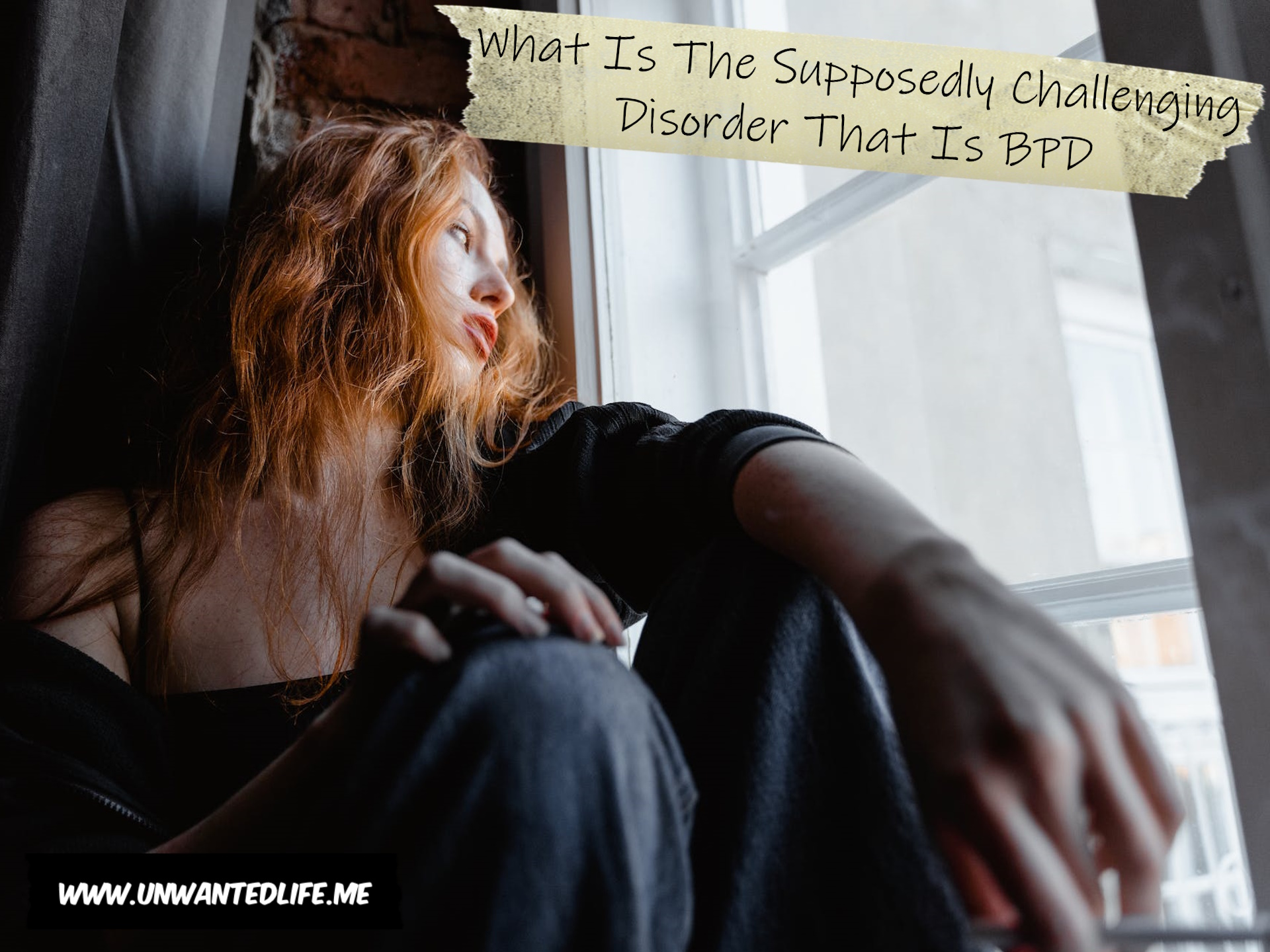BPD, also known as borderline personality disorder, was the first mental health condition I was diagnosed with after being given a court-appointed psychiatrist. At the time, I didn’t know what that diagnosis meant, and it was never explained to me, even though I was engaged with my local mental health team. But eventually, when I found out what it was years later, it made so much sense. Thus, I thought I’d use today’s article to explore what BPD is and what makes people think it’s a challenging condition to work with because I’ve never done a deep dive into the condition. I hope you find it educational.
What Is Borderline Personality Disorder?
As the name might suggest, BPD is a personality disorder. Usually, a personality disorder is described as involving a rigid and unhealthy pattern of thinking (Chapman, Jamil, and Fleisher, 2017). It is distinct from major depressive disorder, bipolar disorder, post-traumatic stress disorder (PTSD), and other mood disorders even though there are overlapping symptoms (Biskin and Paris, 2012). It’s these overlapping symptoms that can often make BPD harder to diagnose.
BPD is a mental health condition characterised by a pattern of unstable relationships, impulsive behaviours, intense emotions, and a distorted self-image. People with BPD often experience significant impairments in their personal and professional lives due to their symptoms.
According to Biskin and Paris (2012), a BPD diagnosis is based on symptoms present since adolescence or early adulthood. Therefore, a diagnosis is typically based on a thorough mental health evaluation where they’ll consider a person’s symptoms, history, and behaviour to make a diagnosis. Furthermore, it’s also important that such difficulties impact your quality of life (Mind). As is the case with any clinical diagnosis.
Criteria/Symptoms For BPD
Luckily for me, Bach and Sellbom (2016) listed the main nine criteria for BPD according to the DSM-IV and DSM-V, so I’ve been able to copy them here for you (see below). You’re generally required to have five out of the nine criteria to be diagnosed with BPD (Biskin and Paris, 2012).
- Fear of abandonment.
- Unstable relations.
- Identity disturbance.
- Impulsivity.
- Self-destructiveness.
- Affective lability.
- Chronic emptiness.
- Uncontrolled anger.
- Paranoia or dissociation.
Fear of abandonment
People with BPD often fear abandonment and may go to great lengths to avoid real or imagined abandonment. This fear can trigger extreme reactions or behaviours.
For me, this issue was worse with my romantic relationships, where, without fail at about two and a half months into a relationship, I’d suddenly, and for no reason, feel repulsed by them and their touch. I’d also experience fears of them cheating on me. It also really affects the ‘out of sight out of mind’ issue, whereby I’ll I’d try to keep in contact with people after I moved away, but quickly gave up when this wasn’t returned. I think this latter one is what they call, the perception of being neglected.
Unstable relationships
People with BPD often have difficulty forming and maintaining stable relationships. They may be clingy and possessive, or they may push people away. Their relationships are often marked by conflict and chaos. Because people with BPD tend to have tumultuous relationships marked by extreme fluctuations in perceptions of others, they can often see people as either entirely good or entirely bad. This dichotomous thinking (seeing things as black or white) or splitting, as it’s sometimes known, is common for those with BPD.
Identity disturbance and unstable self-image
This can encompass a lot of things that define our identity. For me, it was mainly down to a crisis about my ethnic identity, being Black, but of mixed ethnicity, coming from a White family and living in a nearly all-white town. A town that loved to be racist. For others, it could be because of their sexual identity that they’re struggling to accept, as was the case with a person I met in a BPD support group. If you’re interested in finding out more about that, you can do so by clicking here.
But it can also be with changing political views, shifting career paths, changing values, and shifting goals and future plans (Neurodivergent Insights). No wonder I struggled with being a people-pleaser. My need to be accepted by someone meant I bent over backwards for others and twisted myself up to make it happen.
People with BPD often have a distorted or unclear sense of who they are. They may feel empty or worthless, or they may have a grandiose sense of self-importance. I’ve certainly experienced both of those at one point or another. The feeling of emptiness is the one that has stayed with me on a near-daily basis.
Impulsive behaviours
People with BPD may engage in impulsive behaviours without considering the consequences. This can include things like substance abuse, promiscuous sex, reckless spending, reckless driving, binge eating, and self-harm. Ticks for all but the driving one, as I never bothered to learn to drive.
Self-destructiveness
Engaging in behaviours that had a complete disregard for their wellbeing and self-care, with this often taking the form of sabotaging their happiness because they don’t feel deserving. Basically, we have a giant ‘fuck it’ button that we’re only too happy to hit when things aren’t working out.
At my worst, I would take stupid amounts of drugs and cocktail those drugs together because I didn’t care about the outcome. There were a few times I’d take several substances together on top of alcohol and do it for several days. In fact, if it had killed me, I would have been happy that it did. Instead, it just caused drug-induced psychosis.
Affective lability
People with BPD can experience intense and rapid shifts in emotions and have heightened emotional sensitivity. Meaning, that something that may seem small to someone else can result in big emotions like intense sadness (Neurodivergent Insights).
To illustrate just how quickly our moods can shift, I went from having a really good night out with my friends one night, feeling pretty happy, and then the moment I walked through the door to my place, I fell into despair and tried to kill myself. Luckily, as I gained greater control in suppressing my emotions, I stopped being suicidal and I stopped self-harming.
Chronic emptiness
Chronic feelings of boredom or emptiness are all I know, and it doesn’t help that for a lot of us with BPD, our baseline mood tends to be one of depression. I can barely tell if I’ve enjoyed things as my mood rarely leaves my depressed baseline. It also sucks all the motivation out of doing things because of this very low baseline.
Uncontrolled anger
Uncontrolled anger is often what makes people think that people with BPD might be dangerous, but it’s not what you think. It can just mean frequent arguments in relationships rather than having a calm conversation to resolve issues or something more violent. For me, anger is often my greatest motivator, the one thing that can override my chronic emptiness and depressive mood baseline. But I used to also feel rage inside in some situations, but I’ve never let it out. Oddly enough, my partner has worse control of their anger than I ever have, and they struggle to hide the fact that they’re angry.
Paranoia or dissociation
Some people with BPD may experience dissociation, where they feel disconnected from themselves or from reality during stressful situations. According to Verywell Mind, people with BPD can experience paranoia or paranoid thinking under conditions of stress as well (beliefs of mistrust or malicious intentions). For example, things that would normally be seen as benign will have a hidden meaning in such a state (Bright Quest).

The Challenging Nature of BPD
One of the suspected causes of BPD is childhood trauma, with the other main contender being genetics. Thus, people who experienced abuse, neglect, or other trauma during childhood may be at increased risk for BPD. This is also one of the reasons there have been arguments for making this a trauma condition (Lewis and Grenyer, 2009), namely, complex post-traumatic stress disorder (cPTSD).
A study conducted by Bach and Fjeldsted (2017) into the relationship between childhood trauma, BPD, and suicide risk highlighted the potential role BPD plays. Using 124 participants, their results found that there was an increased risk of suicide after experiencing childhood trauma if the person developed BPD.
This is reflected in one of the more challenging aspects of people with BPD, which is their increased vulnerability to risk, in the therapy sense of the word. It has been estimated through the use of surveys that the prevalence of BPD in the general population is 1.6%, but 20% in the inpatient psychiatric population (Chapman, Jamil, and Fleisher, 2017). Supposedly, it’s more common in women than men, although I don’t know how that might change if it accounted for the full range of gender identities.
This is important because people with BPD are frequently encountered in emergency departments where they present following a suicide attempt or have threatened suicide (Biskin and Paris, 2012). Unfortunately, people with BPD are at increased risk for suicidal ideation and self-harm, as this can be a way of coping with intense emotions or feeling overwhelmed.
Because people with BPD can have problems with forming and maintaining relationships, coupled with issues with emotional sensitivity, rejection sensitivity, and chronic emptiness, they can find it hard to work with a therapist (Avalon Malibu). So, a challenge to a negative belief they may help them could be met with a defensive response or even an aggressive one. As such, a fear of a client lashing out can also make some therapists wary of working with them (Psychology Today).
According to Psychiatric Times, BPD rarely presents without major comorbidities, such as substance dependency, which isn’t surprising. If you’re impulsive and have a disregard for your wellbeing, you’re going to be at risk of developing addictions and other mental health issues.
Another challenging aspect of BPD people is how they might go to extreme lengths to make other people happy, like a people-pleaser. This can also manifest as pushing personal boundaries to their limit with the need for external validation and wanting to be around a person all the time.
Summary
It may be true that in some cases of BPD, such people might be hard to work with as BPD can be a stubborn condition to produce positive changes. However, that doesn’t mean that’s the case for everyone with BPD. If anything, the only thing that makes BPD hard to work with is how hard it can be to diagnose the condition because of overlapping symptoms with other mental health conditions.
Although BPD can significantly impact daily functioning and relationships, with proper treatment, people can manage symptoms and improve their quality of life. I know my BPD isn’t as bad as it was in my late teens and early twenties when things really went off the rails. So, as challenging as BPD might be, it is essential to seek professional help if you suspect you or someone you know may have symptoms of BPD to receive an accurate diagnosis and appropriate treatment. Because with the right treatment, progress can be made.
As always, leave your feedback in the comments section below. Also, please share your experiences with BPD in the comments section below as well. Don’t forget, if you want to stay up-to-date with my blog, then sign up for my newsletter below. Alternatively, get push notifications for new articles by clicking the red bell icon in the bottom right corner.
Lastly, if you’d like to support my blog, you can make a donation of any size below. Until next time, Unwanted Life readers.
References
Bach, B., & Sellbom, M. (2016). Continuity between DSM-5 categorical criteria and traits criteria for borderline personality disorder. The Canadian Journal of Psychiatry, 61(8), 489-494. Retrieved from https://journals.sagepub.com/doi/full/10.1177/0706743716640756.
Bach, B., & Fjeldsted, R. (2017). The role of DSM-5 borderline personality symptomatology and traits in the link between childhood trauma and suicidal risk in psychiatric patients. Borderline personality disorder and emotion dysregulation, 4, 1-10. Retrieved from https://link.springer.com/article/10.1186/s40479-017-0063-7.
Biskin, R. S., & Paris, J. (2012). Diagnosing borderline personality disorder. CMAJ : Canadian Medical Association journal = journal de l’Association medicale canadienne, 184(16), 1789–1794. Retrieved from https://doi.org/10.1503/cmaj.090618 and https://www.ncbi.nlm.nih.gov/pmc/articles/PMC3494330.
Chapman, J., Jamil, R. T., & Fleisher, C. (2017). Borderline personality disorder. In StatPearls [Internet]. StatPearls Publishing. Retrieved from https://www.ncbi.nlm.nih.gov/books/NBK430883 and https://europepmc.org/article/NBK/nbk430883#__NBK430883_dtls__.
Lewis, K. L., & Grenyer, B. F. (2009). Borderline personality or complex posttraumatic stress disorder? An update on the controversy. Harvard review of psychiatry, 17(5), 322-328. Retrieved from https://www.tandfonline.com/doi/abs/10.3109/10673220903271848 and https://ro.uow.edu.au/cgi/viewcontent.cgi?article=4453&context=hbspapers.


An insightful read on BPD – a challenging disorder that deserves understanding and empathy. Your post sheds light on the complexities individuals with Borderline Personality Disorder face. Let’s hope we can foster compassion and break down stigma around mental health.
It certainly would be nice if more people understood BPD. Thanks for commenting
Very informative. I’ve done a lot of reading into BPD and this is on par with what I know in a easy-to-digest presentation
Thanks for commenting
Great blog.
I am doing some research. My daughter (25) was recently diagnosed with bipolar disorder (which sort of fits some of her behaviors), but given your blog, I seriously think BPD seems much more aligned. This is so helpful. Thank you.
It there are doubts, there would be nothing wrong with getting a second opinion from a professional. It is also worth remembering that someone can have more than one mental health condition. I BPD, two anxiety disorders, and an eating disorder all at the same time. I wish you all the best with getting the support your daughter needs